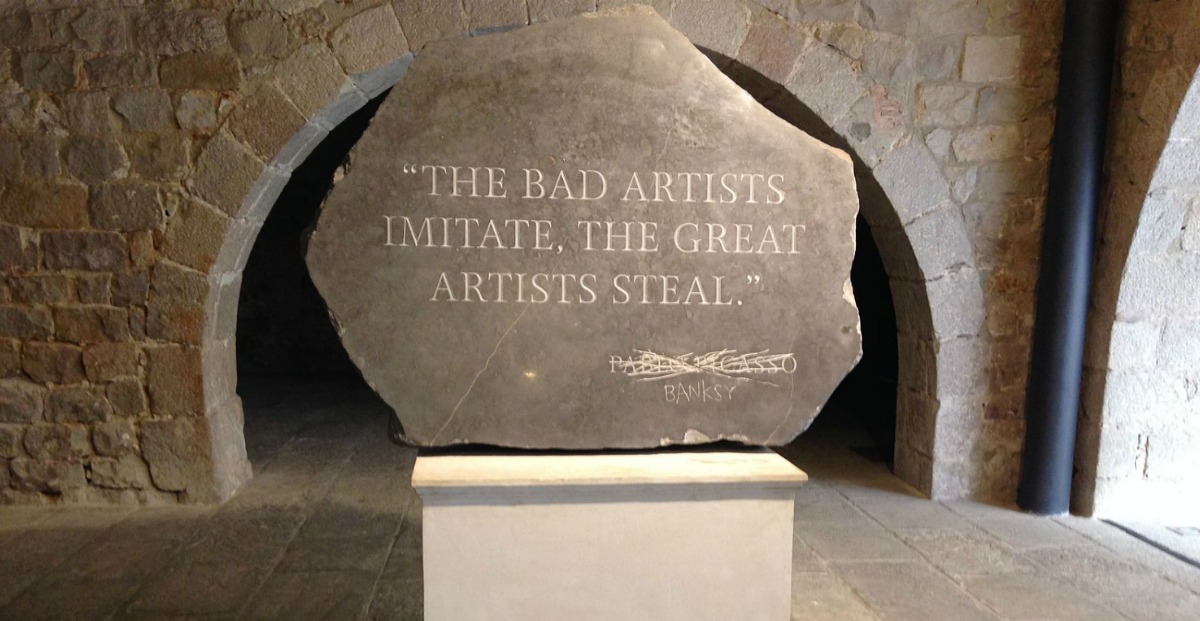Steal to Be Great

If you were forced to change your entire business and invent something new, would you? Could you?
Earlier this year, a company I work with decided to change their entire business model. They shifted from consulting and working on fee-based projects to offering a cloud-based software product, which they first needed to design and build. This change required them to draw upon the project management skills and industry knowledge that they accumulated over the last twenty years—and to essentially become their own client.
As drastic as this transformation has been, it will succeed. Why? Because their entrepreneurial vision is clear, their competencies are established, and they’ve decided to follow the path of other great artists and steal.
Steve Jobs famously observed that “Good artists copy. Great artists steal.” Ironically, versions of this quote have also been ascribed to T.S. Elliot, Igor Stravinsky, William Faulkner, and Pablo Picasso, making the sentiment a bit autological. Regardless of its origin, no artist better embodies this school of thought better than Billy Joel, who often “steals” from diverse sources, recombining his inspiration into something entirely new. In fact, Joel’s song “Angry Young Man” was written to mimic the drum solo in The Safaris’ song, “Wipeout.”
Right now, you’re thinking, “OK. Artists don’t ‘steal’ – they’re inspired. How is the company you mentioned above making this happen without it being actual theft?”
The business in question began by honestly reflecting on their core competencies—as individuals and as a company. Next, they used those competencies as a starting point to evaluate their experiences, the experiences of others, and the different products, known problems, and existing solutions to those problems.
From there, they identified several large, enterprise-scale projects that had been designed as “one-offs” for specific clients (their own clients and other clients in their market).
Then they asked and answered a crucial three-part question:
Q1: Is the problem that was solved for the larger clients a problem that could be solved for small- to medium-sized businesses (SMBs)?
A1: Yes.
Q2: Is the identified problem a pain point for SMBs?
A2: Yes.
Q3. Can some or all of the work done for the enterprise-level clients be duplicated for the SMB market?
A3: Yes.
There were a few other steps involved, but this is where their journey began. For me, the most interesting part of this story isn’t the vision required to change (it’s audacious), the guts it took to make this change (great big guts), or the obstacles that the business overcame (many, many obstacles). Instead, what most impressed me was the truly creative, entrepreneurial spirit that enabled this company to draw inspiration from a multitude of sources to create something new.
Finding an inspiration point that allows you to quest your way to greatness is a tricky proposition. By keeping in mind the three questions outlined above, however, you will be on your way to honing your strategy.
There are three other essential question sets that you can ask yourself, as well, to help frame your big moves. They include:
Part I – Current Services/Solutions
- Clarity of Service/Solution – What do we actually do?
- Service/Solution Demand and Effectiveness – Is the demand for what we do growing or shrinking—and why? Does our solution completely meet the clients’ needs in this area?
- The Inaction Tax – What happens if we don’t change what we do?
Part II – Problems
- Problem Experience – What problem(s) do we know how to solve? Or, what problems have we solved in the past? (Do not confuse this with your existing service/solution.)
- Problem Similarity – Is the problem that we know how to solve similar to another problem? If yes, how is it similar?
- Problem Demand and Effectiveness – Is the identified problem growing, shrinking, or only partially solved? Why? Asked another way, is the volume of this problem changing?
Part III – Solutions
- Solution Similarity – Is the solution(s) to the problem(s) that we identified in Part II similar to any other solutions to any other problems?
- Solution Demand and Effectiveness – How effectively will (or, with iteration, could be) our solution be used to solve anything else?
- Go to Market – What would it take to apply our solution to a different market?
Questions like these will help you reveal opportunities to “steal.” These questions are essential for crafting your organization’s strategy and illuminating what “could be.” What “could be,” though, is not possible without the will to evolve. So remember my very first question – If you were forced to change your entire business and invent something new, would you?
